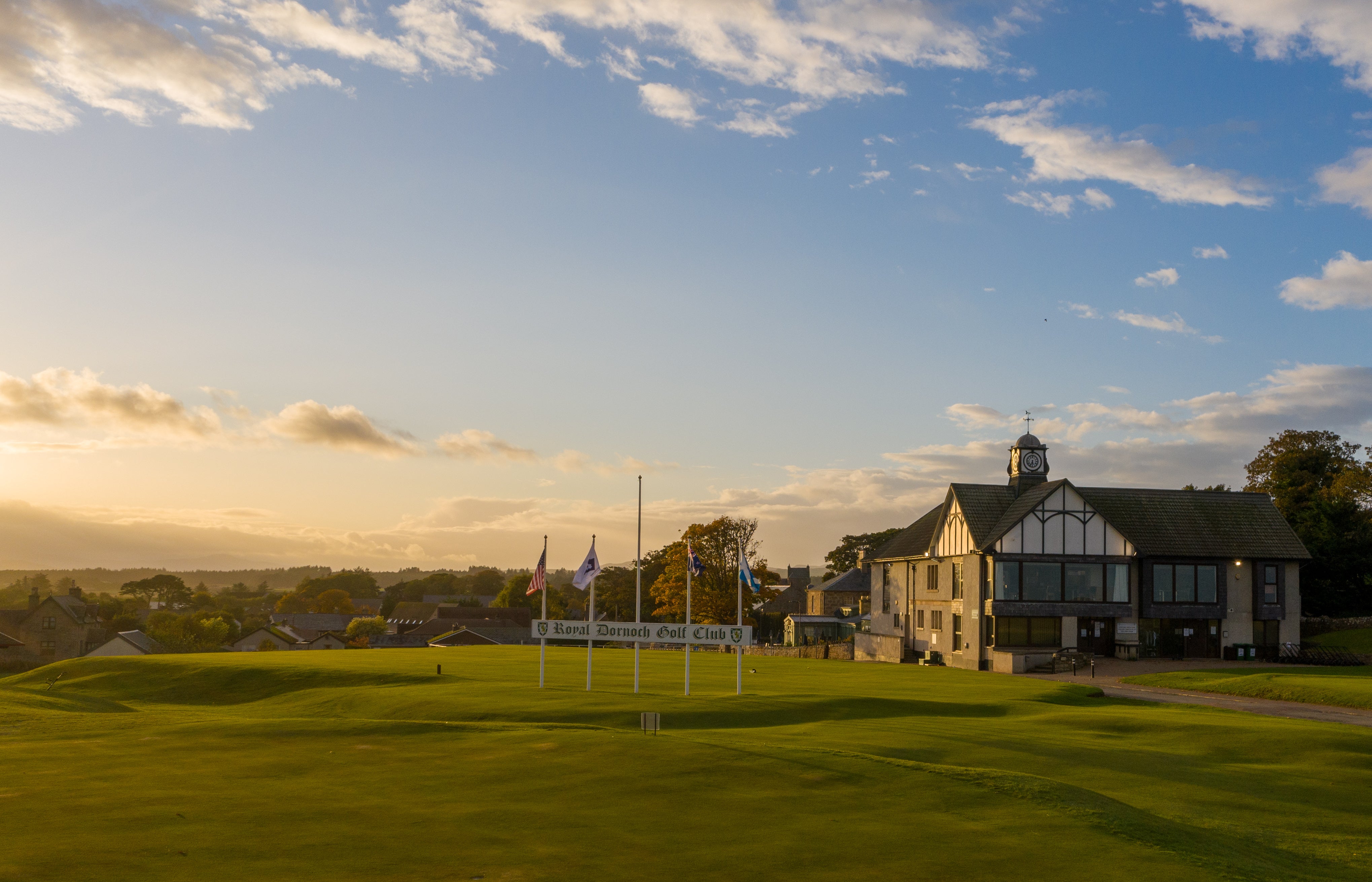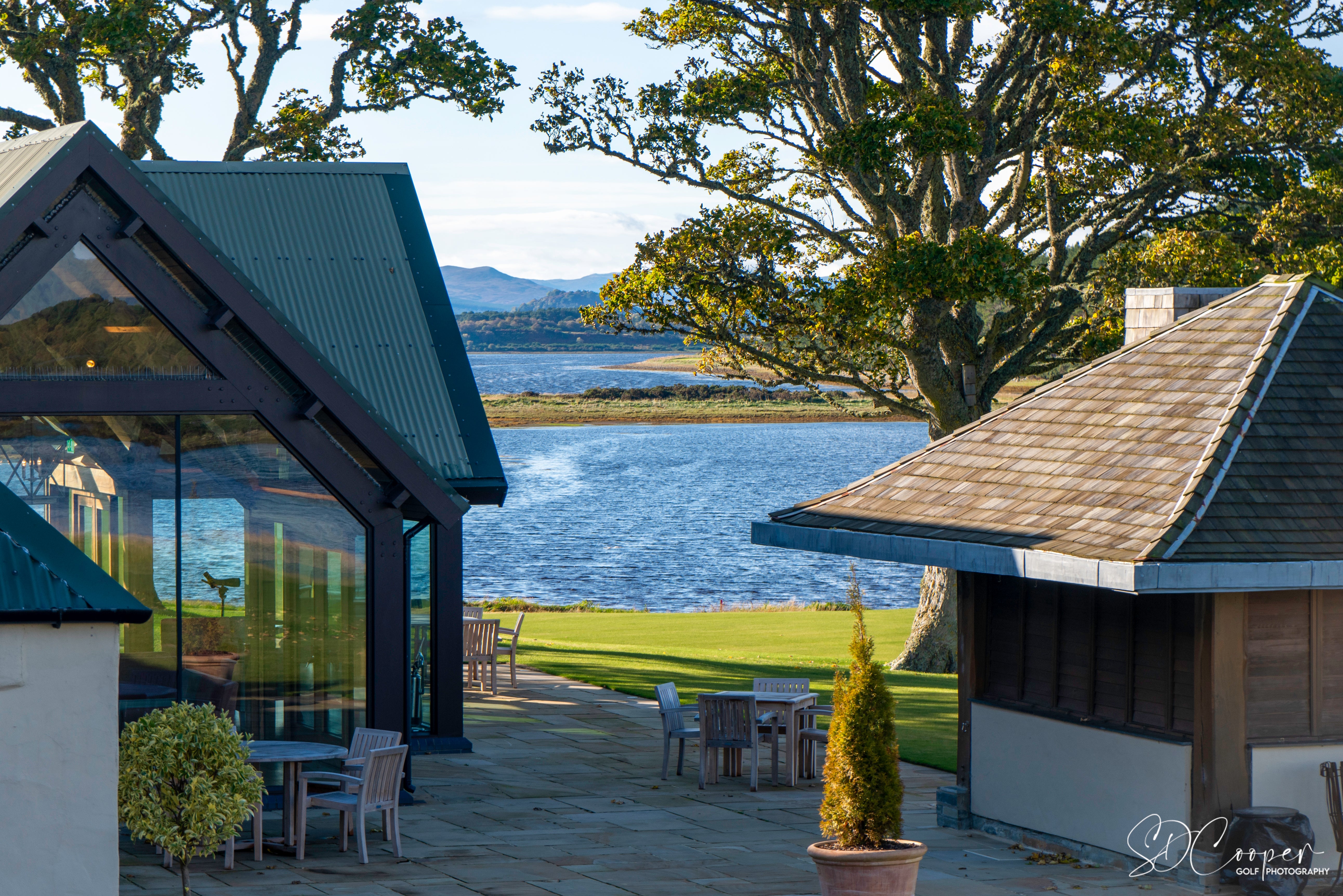
Royal Dornoch Golf Club
Since I first visited last year, I've fallen in love with the course, the membership, and the town itself. It's a special place - so please forgive my lack of brevity.

Early years
They've been playing golf at Dornoch since 1616 (not a typo). The club was founded in 1877, and the appointment of John Sutherland as secretary in 1883 was one of its early triumphs.
As a columnist for a number of London papers, he was responsible for driving prominent visitors to the area - particularly in the years between the World Wars. Joyce and Roger Wethered were a particularly notable couple who would holiday in Dornoch, but they were not alone in doing so. In addition to helping the club receive its Royal Charter in 1906, he was also responsible for employing Old Tom Morris to extend the links to 18 holes in 1886. His contribution to and promotion of the links, in his 58 years in the job, cannot be overstated.
The links evolved again after the Second World War. The loop from 13-18 was lost after being requisitioned by the Ministry of Defence - so 6 new holes were built under the eye of George Duncan. Now, they blend so naturally with the rest it's hard to tell they weren't original.
The holes:
Part of the allure of Dornoch is the consistency if its holes. Therefore, it is hard to pick out particular favourites. Most holes receive a mention.
The first is somewhat of a 'gentle handshake' to ease us off. A little over 300 yards - driver might feel like the obvious play, but can often cause more problems than it solves. A generous fairway at 200 yards tapers towards the green, with a dangerous bunker some 30 yards short of the putting surface to catch the over ambitious. The green sets the tone for what is to come - a beautiful upturned saucer, bunkered on the front edge with closely mown run offs to the sides and rear.

The second challenges the sixth for my favourite par 3 on the course. The local joke is the most difficult shot at Dornoch is your 2nd to the second. Only when you've missed this green can you fully appreciate this...

From here you walk down the path cut through the 'whins' (gorse) to emerge on the course 'proper'. From here, most of the holes are visible - as well as a perfect view of the quite stunning Dornoch Firth. The land around the bay is on a split level, the outward holes marginally higher than the inward ones. This affords a view of the water on almost every hole. It was as if the land had been created purely for golf.
Three and four are similar par 4s of over 400 yards. Two long, relatively straight holes with whins covering the bank to the left. You typically end up right to avoid this prickly end, playing from playable but exceptionally challenging terrain instead.
Three has a wider fairway and bunkers to the right, whereas the narrower fourth doesn't require any fairway bunkers to keep you on your toes. Both have the most wonderful green complexes. Four the more extreme, another precipitous fall to the rear and right. For the right hander, the angle of the string of greenside bunkers puts the short right or long left miss in real trouble.

Five is one of the best short par 4s I've found on my travels. Whilst it is a little over 350 from the championship tee - the members play it from 300, an ideal yardage.
Stood on this tee, there are half a dozen clubs you could play - even on a still day. Whilst the fairway is one of the wider on the links - 5 bunkers lie in wait down the right hand side for the non-commital mid iron. The better line to the green is instead down the left hand side, again flirting with the whins. On this line, three bunkers await at 270 - very much in play when playing down breeze on the firm fairways.

The green here is one of the best (picture below). Long and narrow, you can see why it is best approached from the left hand side of the fairway. Pitching too far right and you'll run all the way down, again facing another incredibly tough pitch back up the hill. Playing from the right hand side of the fairway gives such a narrow landing area that one of the greenside pots to the left is a common fate.
For such a short hole, a 4 here is a great return.

Six is another brilliant par 3. The start of the 'new' holes, many call it their favourite of Dornoch's par 3s. It may be only 160 yards, but the green measures a meagre 12 yards wide. With whins in play with a pull left, or else a trio of brutal pots - many will find themselves pitching up another of those steep banks having bailed out right. The green staff keep this turf short enough to ensure the ball rolls all the way down, but long enough to prevent you from simply putting back up.

Eight involves a leap of faith from the tee. A drive or long iron at the marker post on the horizon, and the hope you'll find your ball on the beautifully undulating fairway that cascades down the hill towards the beach. One of few occasions when you play down to a green - make the most of it.

Nine brings a new hazard into play for the first time - a pulled drive on this par 5 could find the beach. With so much sand in play, there are no formal bunkers required on the drive. However, a bunker to catch a pushed lay up is tactically placed short right, and a few more guard this expansive green. Another best approached from the left.

Ten is another medium length par 3, well bunkered short and with run offs long and to the right - guarding this beautifully proportioned two tier green.
Eleven is a brute. This time the whins are to the right. To hit this long green in two, a long iron is normally required. From the cambered fairway, the bunker and run off to the left collect more than their fair share of approaches.

At the second and last par 5, par is no bad score on twelve. The hole gently sweeps to the left, with thicker rough and more extreme broken ground guarding against the inside line being taken. If your drive does find the fairway, there are bunkers down the right hand side to navigate with a layup. If instead you're feeling ambitious, make sure you navigate the grassy hump perfectly positioned front and centre of the green. With a long iron or wood, it is likely where a perfectly struck second would pitch or run over. Instead, a gentle draw off the right hand green side bunker is required - not easily executed with a stiff breeze off the Firth.

Thirteen is possibly the easiest of the par 3s, unless you happen to miss the green.

7 bunkers surround this short hole, but it is one of very few greens where balls collect towards the centre - rather than being repelled.

And so we reach the best known of Dornoch's holes, the fourteenth: Foxy. The green sits on the last of a series of ridges formed some time during the last ice age. This bunkerless par 4 measures just shy of 450 yards from the back tee, and the members tee isn't much shorter.
With thicker rough down the left, you must be on the short stuff to have a chance of hitting the green in regulation. From the blind right hand side, only a towering approach has a chance of holding this amazing green. The more reliable line in is from the left side, giving you a chance of running it up the front left slope.

Click here to purchase this image of Foxy as a print ☝️
The change in elevation between the fairway and ridges is only about 5-7 feet. There are no towering dunes in play at Dornoch, like you might find on the West Coast of Ireland or Turnberry. The topography here is more subtle - and Foxy is the epitome of it.

When our 4, or more likely 5, has been secured on Foxy - the 300 yard fifteenth offers a chance to recover the dropped shot. The flag is visible beyond the shaggy hill in the centre of the fairway. Again, a question is asked. Short, right, left or over? All are possible routes to the green - but none particularly easy. The green is heavily cambered from right to left, and a delicate pitch from around green side is a real challenge. Laying short of the centreline mound is therefore advisable - but from here, a blind approach is no easier. An examination in subtlety rather than power.

Sixteen plays up a steep bank - a pair of bunkers right just enough to focus the mind on the drive. Too far down the left and the 'quarry' could provide a final resting place for your ball. While the photograph below doesn't convey the steepness of the approach, it shows the intelligence of the mowing lines to the right of the green. Left is dead - a precipitous drop to a lost ball. Right is closely mown safety, with just enough rough clad hillocks to keep your mind sharp.

Seventeen is one of Dornoch's famous tests. Back down the hill, a ball that limps over the plateau will demand a long approach that is almost more challenging than if it had held at the top of the hill. The best drive is instead longer than first inspection suggests - drawing over the marker. From the point where the fairway tapers, there is only 80 yards over the bunkers and rough to the rolling green. The sister hole to the 8th, but with an additional layer of jeopardy one would expect at this crucial part of the round.

Image © Matthew Harris - @MattHarrisPIX @golflife_matt
Finally - we reach the eighteenth. A ridge obscures the green for the long approach, and ending in the channel before it is a likely place to play your third from. A long and challenging finish.

Dornoch is a subtle test. The greens are generally large and fast - meaning your approach play must find the right parts of them. If not, regularly putting from distance will take its toll.
The out and back layout across split level terrain is a model that has been widely copied elsewhere - affording views of the sea from almost every hole.
If it wasn't evident from the above, Royal Dornoch is one of my favourite links in Britain.
-




Leave a comment
This site is protected by hCaptcha and the hCaptcha Privacy Policy and Terms of Service apply.